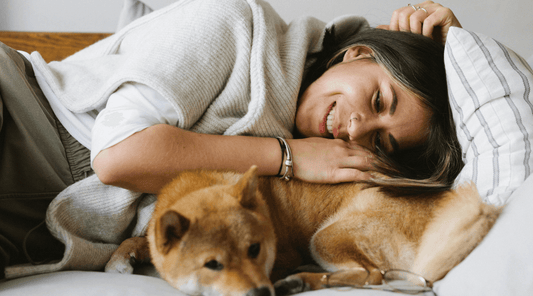
How to Stop Your Dog from Chewing Furniture
Rachel RobsonShare
Is your furry friend turning your furniture into their personal chew toy? Don't worry; you're not alone!
Many dog owners face this frustrating problem, but there are steps you can take to help your pup learn better habits.
In this friendly guide, we'll explore some effective strategies to stop your dog from chewing furniture and keep your home looking its best.
Understand Why Dogs Chew Furniture
Before we dive into the solutions, it's essential to understand why dogs chew furniture in the first place. Puppies, like human babies, explore the world with their mouths.
Chewing helps them learn about their surroundings and relieves the discomfort of teething. Adult dogs may chew due to boredom, anxiety, or a lack of proper chew toys.
Provide Plenty of Chew Toys
One of the most effective ways to prevent your dog from chewing furniture is to provide them with plenty of appropriate chew toys. Offer a variety of textures and shapes to keep your pup interested.
Durable rubber toys, such as Kongs, can be filled with treats to make them even more appealing. Rotate the toys regularly to maintain your dog's interest.
Use Positive Reinforcement Training
When you catch your dog chewing on a toy instead of your furniture, praise them enthusiastically and offer a treat. This positive reinforcement will help your pup understand that chewing on their toys is the desired behaviour. Consistency is key, so make sure to reward your dog every time they choose their toys over your furniture.
Discourage Furniture Chewing
If you catch your dog in the act of chewing furniture, interrupt the behaviour with a firm "No" or a loud noise. Immediately redirect their attention to an appropriate chew toy and praise them when they start chewing on it. Never hit or yell at your dog, as this can lead to fear and anxiety, which may worsen the chewing problem.
Use Deterrent Sprays
There are several deterrent sprays available that can make your furniture taste unpleasant to your dog. These sprays are safe and non-toxic, but they have a bitter flavour that dogs dislike.
Apply the spray to the areas of your furniture that your dog tends to chew. Reapply the spray as needed, especially after cleaning your furniture.
Provide Mental Stimulation and Exercise
A bored or anxious dog is more likely to engage in destructive chewing. Make sure your dog gets plenty of mental stimulation and exercise throughout the day.
Take them on long walks, play interactive games, and engage in training sessions.
A tired and mentally stimulated dog is less likely to turn to furniture chewing for entertainment.
Consider Professional Help
If your dog's furniture chewing persists despite your best efforts, it may be time to seek professional help.
A certified dog trainer or behaviourist can work with you to develop a tailored training plan and address any underlying issues that may be contributing to the problem.
Conclusion
Stopping your dog from chewing furniture requires patience, consistency, and a multi-faceted approach.
By providing appropriate chew toys, using positive reinforcement training, and offering plenty of mental stimulation and exercise, you can help your furry friend develop better habits.
Remember, every dog is unique, so be prepared to adjust your strategy as needed. With dedication and love, you can keep both your dog and your furniture happy and healthy.



